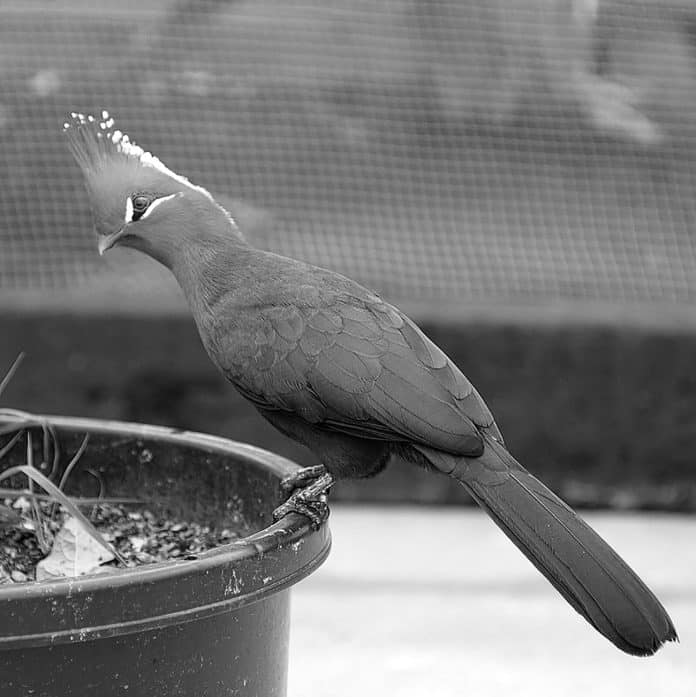Livingstone’s Turaco in Tanzania: Vibrant Colors in the Treetops
Introduction to Livingstone’s Turaco
Livingstone’s Turaco is a stunningly beautiful bird species that can be found in the lush forests of Tanzania. Named after the famous explorer David Livingstone, this turaco is known for its vibrant plumage and mesmerizing colors. In this article, we will explore the habitat, physical characteristics, behavior, and conservation status of Livingstone’s Turaco in Tanzania, as well as the unique features that make it stand out. Additionally, we will provide tips for responsible tourism and birdwatching opportunities in Tanzania, where you can observe this magnificent bird in its natural habitat.
Habitat and Distribution of Livingstone’s Turaco
Livingstone’s Turaco is native to the eastern regions of Africa, including Tanzania. It is primarily found in the montane forests, which are characterized by dense vegetation and higher altitudes. These forests offer the perfect habitat for Livingstone’s Turaco, as they provide ample food sources and shelter. The bird is often spotted perched on the branches of tall trees, where it can easily blend in with the surrounding foliage.
In Tanzania, Livingstone’s Turaco can be found in various national parks and reserves, such as the Udzungwa Mountains National Park and the Eastern Arc Mountains. These protected areas are crucial for the conservation of this species, as they provide a safe haven for the turacos and other wildlife. It is important to note that the distribution of Livingstone’s Turaco is quite limited, making it a highly sought-after bird for birdwatchers and photographers.
Physical Characteristics and Behavior of Livingstone’s Turaco

Livingstone’s Turaco is a medium-sized bird, measuring approximately 45 centimeters in length. It is known for its vibrant plumage, which consists of a combination of green, blue, and purple feathers. The bird has a distinct crimson-colored crest on its head, which adds to its overall beauty. Its wings and tail are adorned with striking red flight feathers, which are visible when the bird takes flight.
In terms of behavior, Livingstone’s Turaco is primarily arboreal, meaning it spends most of its time in trees. It is an agile climber and uses its strong legs and feet to move effortlessly through the dense forest canopy. The turaco is also known for its loud and distinctive call, which can be heard echoing through the forest. It is often seen feeding on fruits and berries, using its curved beak to pluck them from branches.
Conservation Status of Livingstone’s Turaco
Livingstone’s Turaco is currently listed as a species of “Least Concern” by the International Union for Conservation of Nature (IUCN). However, its population is declining due to habitat loss and fragmentation. Deforestation, agricultural expansion, and illegal logging pose significant threats to the turaco’s habitat, making conservation efforts crucial for its survival.
To ensure the long-term survival of Livingstone’s Turaco, it is important to protect and preserve its habitat. This includes creating and maintaining protected areas, promoting sustainable land-use practices, and raising awareness about the importance of biodiversity conservation. By supporting organizations and initiatives focused on preserving the forests of Tanzania, we can contribute to the conservation of Livingstone’s Turaco and other endangered species.
Unique Features and Vibrant Colors of Livingstone’s Turaco
Livingstone’s Turaco is known for its vibrant and eye-catching colors, which make it a true gem of the avian world. Its plumage features a combination of green, blue, and purple hues, beautifully contrasting with the crimson crest on its head. The red flight feathers on its wings and tail add an extra touch of elegance, especially when the bird takes flight.
What makes Livingstone’s Turaco truly unique is the presence of specialized feathers called “turaco powder downs.” These feathers have a unique structure that allows them to produce a powdery substance, which the bird uses to maintain its plumage. This powder helps to waterproof the feathers and also plays a role in displaying vibrant colors during courtship rituals.
The vibrant colors of Livingstone’s Turaco serve multiple purposes. Firstly, they help the bird blend in with the surrounding foliage, providing camouflage and protection from predators. Secondly, the colors play a crucial role in courtship displays, where males showcase their plumage to attract females. These displays involve intricate movements and vocalizations, creating a mesmerizing sight for observers.
Birdwatching and Photography Opportunities for Spotting Livingstone’s Turaco in Tanzania
Tanzania offers excellent opportunities for birdwatching and photography, and spotting Livingstone’s Turaco is a highlight for many enthusiasts. To increase your chances of observing this magnificent bird, it is recommended to visit the national parks and reserves where it is known to inhabit. The Udzungwa Mountains National Park and the Eastern Arc Mountains are particularly good locations for turaco sightings.

When birdwatching or photographing Livingstone’s Turaco, it is important to respect the birds and their habitat. Keep a safe distance and avoid disturbing their natural behavior. Binoculars and telephoto lenses are essential tools for getting a closer look without causing disturbance. Additionally, it is advisable to hire a local guide who is knowledgeable about the area and can help you navigate the forests.
Best Time and Locations to Observe Livingstone’s Turaco in Tanzania
The best time to observe Livingstone’s Turaco in Tanzania is during the dry season, which typically runs from June to October. During this time, the forests are less dense, making it easier to spot the birds perched on tree branches. The early morning and late afternoon are ideal times for birdwatching, as the turacos are often more active during these hours.
In terms of locations, the Udzungwa Mountains National Park is one of the top spots for observing Livingstone’s Turaco. The park is home to a diverse range of bird species and offers stunning views of the mountainous landscape. The Eastern Arc Mountains, including the Nguu Mountains and the Uluguru Mountains, are also known to be good locations for turaco sightings.
Tips for Responsible Tourism and Minimizing Disturbance to Livingstone’s Turaco
When visiting the habitat of Livingstone’s Turaco, it is important to practice responsible tourism to minimize disturbance to the birds and their environment. Here are a few tips to keep in mind:
- Stay on designated trails: Stick to established paths and avoid trampling on vegetation. This helps preserve the natural habitat and minimize your impact on the turacos and other wildlife.
- Keep noise levels low: Loud noises can startle birds and disrupt their natural behavior. Speak softly and avoid sudden movements when observing Livingstone’s Turaco.
- Do not feed the birds: Feeding wildlife can lead to dependency and disrupt their natural feeding patterns. Leave the birds to find their own food sources.
- Respect their space: Keep a safe distance from the birds and avoid approaching them too closely. This allows them to go about their activities without feeling threatened.
By following these guidelines, you can enjoy the beauty of Livingstone’s Turaco while ensuring their well-being and the preservation of their habitat.
Other Bird Species Found in the Same Habitat as Livingstone’s Turaco in Tanzania
Tanzania is home to a rich diversity of bird species, and the habitat of Livingstone’s Turaco is no exception. When exploring the forests where the turacos reside, you may come across other fascinating bird species. Some of the notable ones include:
- African Grey Parrot: Known for its exceptional intelligence and mimicry abilities, the African Grey Parrot is a highly sought-after species among bird enthusiasts.
- Schalow’s Turaco: This turaco species shares a similar habitat with Livingstone’s Turaco and can be found in the montane forests of Tanzania. It is known for its distinct yellow beak and vibrant plumage.
- Red-capped Robin-Chat: A small passerine bird, the Red-capped Robin-Chat is known for its bright red cap and melodic song. It can often be spotted hopping on the forest floor in search of insects.
These are just a few examples of the many bird species that coexist with Livingstone’s Turaco in Tanzania. Exploring the forests will reveal a treasure trove of avian wonders.
Conclusion and Importance of Preserving the Habitat of Livingstone’s Turaco
Livingstone’s Turaco is a true marvel of nature, with its vibrant colors and unique features. As a resident of Tanzania, it is important to recognize the value of this species and the need to protect its habitat. By preserving the forests and promoting sustainable practices, we can ensure that future generations have the opportunity to witness the beauty of Livingstone’s Turaco.
For more articles related to Wildlife in Tanzania (Animals), click here!


































